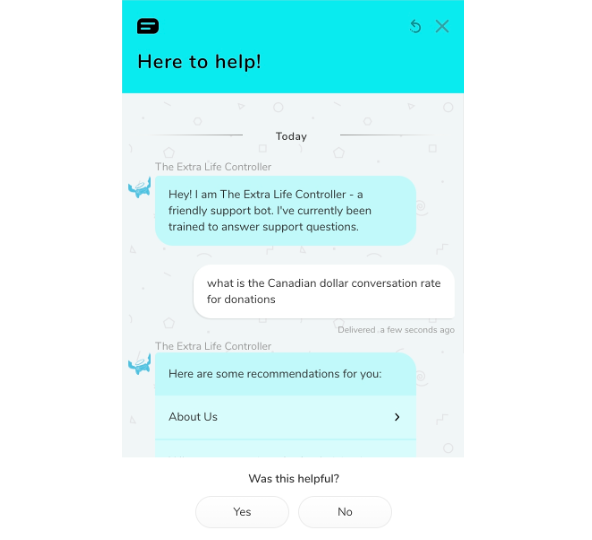 (Photo by iStock/xijian)
(Photo by iStock/xijian)
Conventional wisdom about nonprofit fundraising considers these two statements equally true: 1) Acquiring new donors loses money, and 2) Future gifts from new donors make up for the money lost on acquisition.
Alas, only one of them is true. Acquiring new donors does, indeed, lose money, often estimated at 50 percent of the initial gift. However, according to Blackbaud, fewer than a quarter of those initial donors will renew their gift. The math gets even worse in out-years, as 60 percent of donors lapse year after year.
The reality is that most organizations spend an enormous amount of time frantically trying to refill their “leaky bucket” of donors. The result is a transactional approach to fundraising that requires constantly asking for donations rather than spending time getting to know donors, particularly donors who aren’t writing huge checks. Just because it’s the norm, however, doesn’t make it good or effective, particularly during a pandemic when everyone is distracted, scared, and stretched.
We recently released a report funded by the Bill and Melinda Gates Foundation on using artificial intelligence (AI) for fundraising and philanthropy. The report outlines ways that nonprofits are beginning to use AI to increase giving, and while the fact that the most powerful technology in history can help nonprofits raise more money didn’t surprise us, we were surprised by how much opportunity nonprofits have to use AI to reimagine and rehumanize fundraising.
Are you enjoying this article? Read more like this, plus SSIR's full archive of content, when you subscribe.
AI automates tasks that previously only humans could do. The field isn’t new—it’s been around for decades—but it’s recently become much less expensive, making it available for everyday use and by smaller organizations.
AI tools for increasing fundraising currently include:
- Online chatbots that serve as conversational interfaces between organizations and the public
- Software to identify prospective donors from internal data sets
- AI-powered tools that identify prospective donors on social media platforms and through other public sources of information
- Algorithms that analyze donor data and suggest how to personalize appeals
One example of a nonprofit putting AI tools into action is the 24-hour fundraising marathon Extra Life, a fundraising effort of Children’s Miracle Network Hospitals. Staff members were getting overwhelmed answering the same question from Canadian supporters, who wanted to know what currency Extra Life would use to process their donations. To ameliorate this, Extra Life added a chatbot to its donation page specifically to answer this question, and even used an algorithm to personalize the landing page so that the chatbot appeared only for Canadian donors.
 The chatbot on the Extra Life website provides instant answers to common donor questions about things like conversion rates.
The chatbot on the Extra Life website provides instant answers to common donor questions about things like conversion rates.
Another example is the Cure Alzheimer's Fund, which raised $1.2 million in donations using Gravyty’s AI-powered fundraising software. Gravyty drafts emails to existing donors based on their preferences and previous actions, and highlights donors who are on the cusp of lapsing. Staff members review the emails and cultivation plan, then send them out the door. Gravyty isn’t just automating renewal letters; by helping fundraisers continuously improve the specific content and timing of messages to individual donors, it’s adding more intelligence into the fundraising system.
Similarly, Rainforest Action Network piloted software from Accessible Intelligence Limited in May 2020. This software recommends the right content to include in fundraising appeals (including writing style, specific ask, and even subject lines to test), as well as the right number and interval of communication touch points. As a result, open rates and signed online petitions increased significantly. More importantly, conversion of one-time donors to monthly donors increased 866 percent. (That is not a typo!)
Since the publication of our report, we’ve been thinking about the time development staff could save by using AI. What could change? What could staff do differently or better with this precious gift of time? We see a great opportunity for development teams to patch the holes in the leaky bucket of fundraising, and enable their organizations to move from transactional to relational fundraising, starting with these three activities:
1. Add retention rates to dashboards and budgetary calculations. We have served on many boards and can’t recall one discussion focused on donor retention. Organizations need to measure and monitor donor retention rates over time. They also need to calculate the net cost of fundraising, as well as the cost of money raised through acquisition and lost through lapsed donors over time.
2. Put time for conversations with donors, clients, and volunteers on the calendar. Activities that aren’t on the calendar don’t get done. Staff and leading volunteers (such as board members) need to spend time listening to donors and stop treating them like ATMs. Instead, they need to find out why the cause is important to each donor—not just major donors, but donors at every level—and what makes them feel good or bad when they give.
3. Establish ethical-use guidelines around the use of AI. It’s critically important that organizations use the incredible power of AI with great care. We recommend establishing an outside committee of advisors to discuss issues such as the use and storage of data, the need to inform people when they are talking to a robot and not a person, and careful monitoring of AI-powered efforts for racial and other biases.
One person we interviewed for our report said, “AI can’t fix bad fundraising practices.” Our greatest fear is that nonprofit leaders will use the incredible speed and power of AI to supersize existing transactional fundraising practices. We implore them to take the care and time needed to create a new chapter in fundraising, where every person can be heard and where most donors stay with causes for years, not months.
Support SSIR’s coverage of cross-sector solutions to global challenges.
Help us further the reach of innovative ideas. Donate today.
Read more stories by Allison Fine & Beth Kanter.

